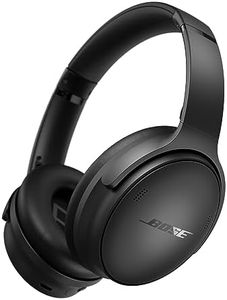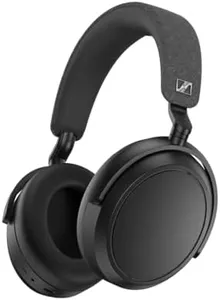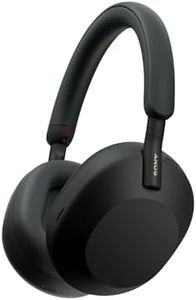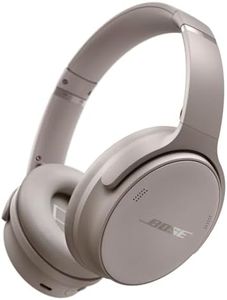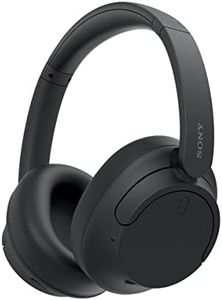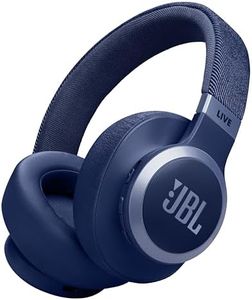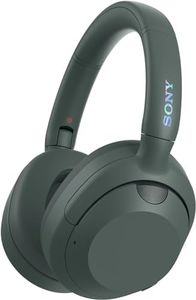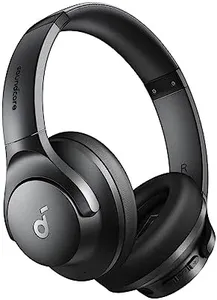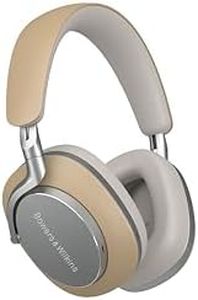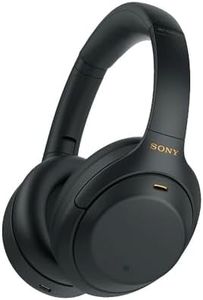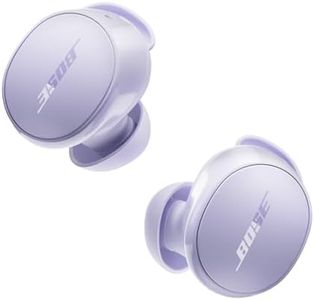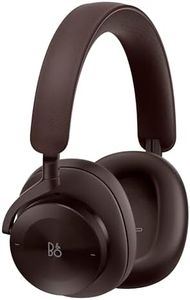We Use CookiesWe use cookies to enhance the security, performance,
functionality and for analytical and promotional activities. By continuing to browse this site you
are agreeing to our privacy policy
10 Best Noise Cancelling Headphones For Travel
From leading brands and best sellers available on the web.Buying Guide for the Best Noise Cancelling Headphones For Travel
Choosing the right noise-cancelling headphones for travel can make your journeys much more comfortable and enjoyable. With so many options out there, it’s important to understand which features actually matter for your needs. Consider where and how you’ll use the headphones—whether it’s on planes, trains, or buses—and what feels most important, like sound quality, comfort, or battery life. By understanding the main specifications, you’ll be able to identify which headphones will help block out unwanted noise and provide the best listening experience during your travels.Active Noise Cancellation (ANC) QualityActive Noise Cancellation refers to the headphone's ability to block out background noise by using microphones and special technology to cancel out unwanted sounds. This is especially important for travelers who want to reduce engine noise, chatter, or other ambient sounds. ANC quality can range from basic to premium, with high-end headphones blocking most low-frequency noise, while entry-level options might only lessen it. For frequent travelers and those bothered by loud environments, strong ANC is highly desirable, while occasional users might be fine with moderate cancellation.
Comfort and FitSince you may wear headphones for many hours while traveling, comfort is crucial. This depends on padding, headband flexibility, ear cup size, and overall weight. Over-ear headphones generally offer more cushioning but can be bulkier, while on-ear and in-ear options are more portable but may not be as comfortable for long sessions. Consider your personal preference for comfort versus portability, and if possible, try the headphones on to see how they feel over time.
Battery LifeBattery life indicates how long headphones can work on a single charge, which is vital for long journeys without easy access to charging. Travel headphones often offer ranges from under 10 hours to over 30 hours with ANC turned on. If you tend to take long-haul flights or multi-day trips, look for headphones with extended battery life; if your trips are usually short, you might be fine with less.
Portability and FoldabilityPortability refers to how easy it is to carry and store your headphones. Some models fold up or come with travel cases, making them easier to pack. Large, non-folding headphones might offer better sound but take up more space. If you travel light or have limited bag space, opt for models that fold flat or come with a compact case.
Sound QualitySound quality expresses how well headphones reproduce music, movies, or calls. While some travelers prioritize noise reduction over sound performance, others want both. Headphones can range from offering basic, clear audio to rich, detailed sound with deep bass and crisp highs. If you’re an audiophile or enjoy entertainment on the go, aim for better sound quality; if you mainly want peace and quiet, average sound may suffice.
Connectivity OptionsMost modern noise-cancelling headphones use Bluetooth for wireless audio, but some also include a cable for wired listening, which can be useful if the battery runs out or on planes that require a wired connection. Check if the headphones support multipoint pairing (connecting to multiple devices at once) or advanced Bluetooth features. Pick the connectivity that will best match your devices and typical travel scenarios.
Controls and FeaturesControls and features cover things like touch panels, physical buttons, voice assistant access, and quick listening modes that allow you to hear announcements without removing your headphones. Simpler controls can be easier while moving, while extra features can add convenience. Decide which features are essential for your typical travel habits—whether it's pausing music quickly or adjusting noise cancellation on the go.
